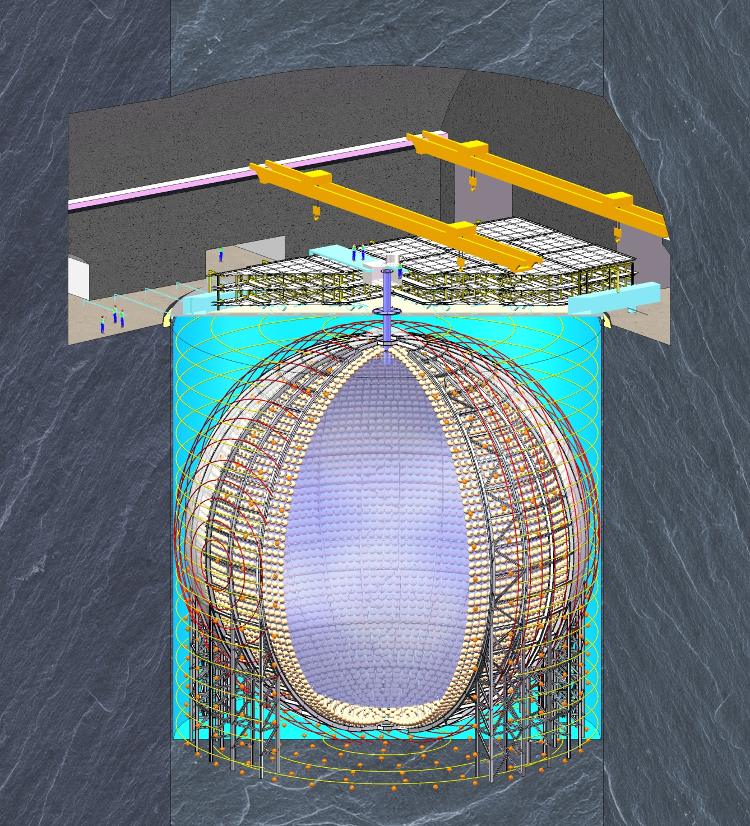JUNO

The Detector:
The Jiangmen Underground Neutrino Observatory (JUNO) is a multi-purpose, liquid scintillator-based neutrino experiment, proposed in 2008 to determine the Neutrino Mass Hierarchy (MH) by detecting reactor antineutrinos. The detection mechanism exploits the inverse beta-decay (IBD) reaction, where an antineutrino interacts with a proton of the scintillator and generates a positron plus a neutron. The detector site has been chosen in order to achieve the best sensitivity to this measurement. The JUNO complex is currently under construction in China, with a rock overburden above the experimental hall of around 700 m, and is located 53 km away from both Yangjiang and Taishan nuclear power plants.
The scintillation light produced in the central detector is collected by more than 40.000 photo-multiplier tubes (PMTs) installed on a spherical structure with 20m radius. The scintillator liquid is composed of a mixture of several compounds, chosen in order to maximize the light production per neutrino event. The central scintillator detector is surrounded by a cylindrical water pool, designed to detect the Cherenkov light from atmospheric muons and to shield against the environmental radioactivity, acting as a veto detector. On top of the water pool there is another muon detector, made of scintillating strips, which has the role to accurately identify the muon tracks.
Video about the construction of the JUNO experiment made entirely by the collaboration members.
Physics goals:
Beside the main goal of the neutrino mass hierarchy identification, additional measurements are accessible to the detector. The reactor antineutrino flux can be exploited for a measurement of the solar oscillation parameters $\theta_{12}$ and $\Delta m^2_{21}$ with a sub-percent accuracy, which would represent the most precise measurement in the neutrino solar sector. Supernovae neutrinos can also be observed in case of a stellar explosion, inferring important information on the burst process at the source. The fine energy resolution can also be exploited to observe the solar neutrino flux, by means of elastic scattering on electrons. Other sources potentially accessible to JUNO are constituted by geoneutrinos, generated in radioactive decays inside the Earth, and atmospheric neutrinos, produced after Cosmic Rays interactions in the atmosphere. Exotic searches include non-standard interactions, sterile neutrinos, and search for proton decay and dark matter annihilation signals.
